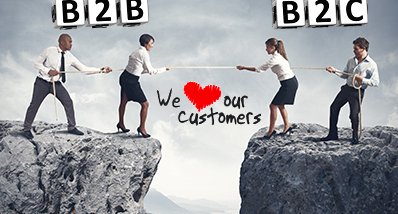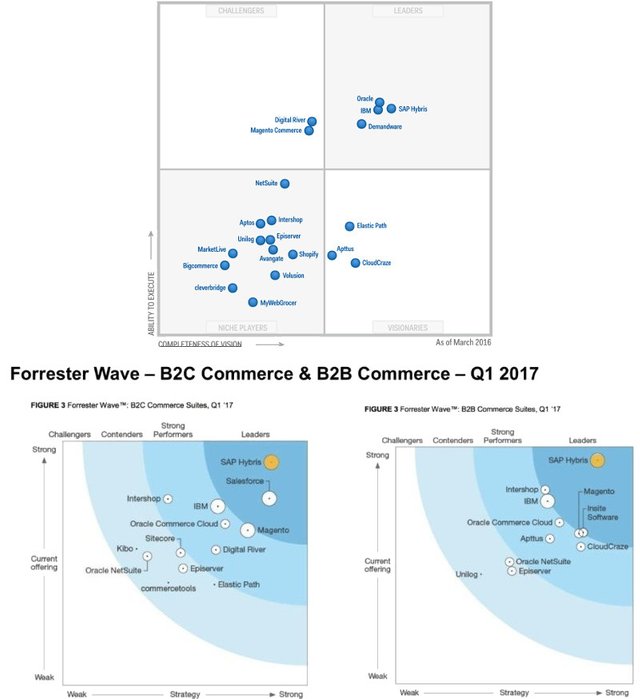
Your company is B2B and so far you were happy in your comfort zone. But nowadays the market is moving fast, as fast as how to sell their products or services. Suddenly realize that you are living in a data-driven world, but you do not have data from the end consumers of your products or services, and this is a huge barrier to increasing your awareness of them, how they interact with your channel or what they expect from you to improve.
It's not just the sale but the data!

If you want to grow your business, you probably already know who has the data has the power. Know your end customers, what they need, how, when and why they buy their products.
More than 50% of companies have a good understanding of the past buying behavior of their customers. In the case of B2B companies, unfortunately, this percentage is much lower.
Selling directly to your end customers will give you a better understanding of the demographics you are working towards, but the most important need is to create a perfect profile for each customer who will take advantage of the product or service being provided. Customer 360, a customer profile is a great way for a company to measure customer needs. The profile could include the likes, dislikes, purchases, items of a customer in the cart, family history and other important aspects.
Once you have your own market, you can also get feedback from your end customers through various channels such as testimonials in your Marketplace, comment box on social networking platforms or customer comments on business review websites. Honest reviews on the above platforms can be instrumental for companies to get to know their customers better.
Understanding customers is a long process. However, once you are aware of the above methods, you will be able to advertise and sell your products in an improved way. B2B companies can also employ the services of an expert call center service provider to better understand their customers. In today's complex and ever-evolving digital landscape, companies need to leverage available data to gain invaluable insight into their customers that will help them expand their reach.
The answer to your problem is Marketplace!

Amazon discovered long ago if they wanted to continue growing, they should start using all possible channels integrated in their market to sell as much as possible, but always leading sales and getting all the data of their customers. The same path was followed by Alibaba or Rakuten.
If you want to start selling directly to your end customers, but without getting in conflict with your actual channels, the best way is to use your channels to make sales. If you try to use any other method to directly sell your products or services to your end customers, you will end up degrading the relationship with your channels or even worse, cannibalizing your own sales.
Use cases where a Marketplace might help:
From a mass consumer company to a door-to-door sales company, there is a marketplace to meet your needs.
There are also many possibilities depending on the maturity of the companies:
Integrate your channel's e-commerce sites into your market: you'll need to connect to the APIs you have available so you can use your actions and prices directly in your market. Your channels will handle with logistics, but you will get all the insights of the sale and your customer.
Offer Marketplace to your Channels: In case your Channels are not digitally developed, you could rent them / share them in your own Marketplace, creating them personal stores that will automatically be part of yours.
In the case of non-developed countries, sometimes large B2B providers decide to give their channels the complete infrastructure, including computers, Internet connection and Marketplace. This allows them to have a huge capillarity with easier and faster logistics, always having a small local store or a door-to-door salesman near the majority of the population.
Marketplaces in the market

To analyze market options I will use the Gartner Magic Quadrant and the Forrester Wave for e-commerce. In fact, in the Forrester Wave there are even two different analyzes for B2B and B2C companies. Be careful, since not all e-commerce platforms allow you to have your own market, and not every market makes it easy to connect to your channel sites.
The market is full of options and each one of them may fit with a different need, but my intention in this case is just to give you an idea of what kind of products might help you, and I’ll just talk about 5 of the most know platforms (feel free to write here about your experience with other platforms)
- IBM Websphere Commerce
It’s perfect for the biggest companies. The most valuable pro of IBM WSC is to be a complete package engineered to support for high volume transactions, with customizable features, and high scalability. It’s very easy to start working with it and there is no need of programming in order to configure it to your needs once it’s implemented.
To have a successful implementation you need to find a good partner to help you with it. The right analysis of your requirements and your business will help you to get the most of your Marketplace. It requires a team of developers who understand the platform and APIs, don’t forget you’ll need to connect to your channels’ own marketplaces.
- SAP Hybris
SAP Hybris is a leader in the B2B eCommerce space in that they have a full suite of PIM, ERP, and eCommerce solutions for businesses. Their combination of back office systems and eCommerce offerings make them a very strong contender in the upper tier of the B2B and B2C eCommerce industry. Hybris is certainly a premium option and requires a fairly large budget and timetable to do effectively. However, for large business this may make the most sense given their full solution offerings. In the cons side I'd add the management tooling is not very intuitive, the documentation isn't easy to follow, and the database layer treated as an abstract second layer that is generated from scripts.
- Magento
It's a good selection for the small business to the $100M range. In the pros side are the speed of installation, ease of use of the tooling and quick learning of the merchandising capabilities and order management. Magento is PHP with MySQL. The database does have some interesting design features using named value pairs rather than a rationalized structure. I do believe this will adversely affect performance of the database with growing transactions and server requests. Caching can help, but transactional performance will suffer.
- Demandware (SalesForce)
DemandWare is another one of the most wieldy used B2C SaaS eCommerce platform with respect to install-base. The majority of DemandWare's customers are B2C retailers, although DemandWare has been making a strong push into Omni-Channel. The primary advantage of using DemandWare is that it is very simple to support relative to traditional 3-tiered solutions like Magento and Hybris. Also DemandWare solutions can be implemented in a shorter timeframe because many of the infrastructure constraints present in traditional models are abstracted in their SaaS environment. DemandWare was built for retail, and as a result is not ideally suited for complex B2B pricing and promotions use-cases. This can be a problem if you want to exploit it as a nature Marketplace with complex integrations with our channels’ APIs.
- Oracle Cloud Marketplace
Forrester says Oracle Commerce Cloud has “high availability and elastic scalability across a mature, global cloud infrastructure.” It’s built on the architecture of ATG and Endeca technologies. One of the pros is they’re offering some widgets that extend core capabilities of the product and they’re continuously adding new technology and solution partners. In the cons side it does not offer yet multi-site or complex B2B merchandising rules, which again could be a big problem depending on the kind of marketplace and complexity we want to build with our channels.